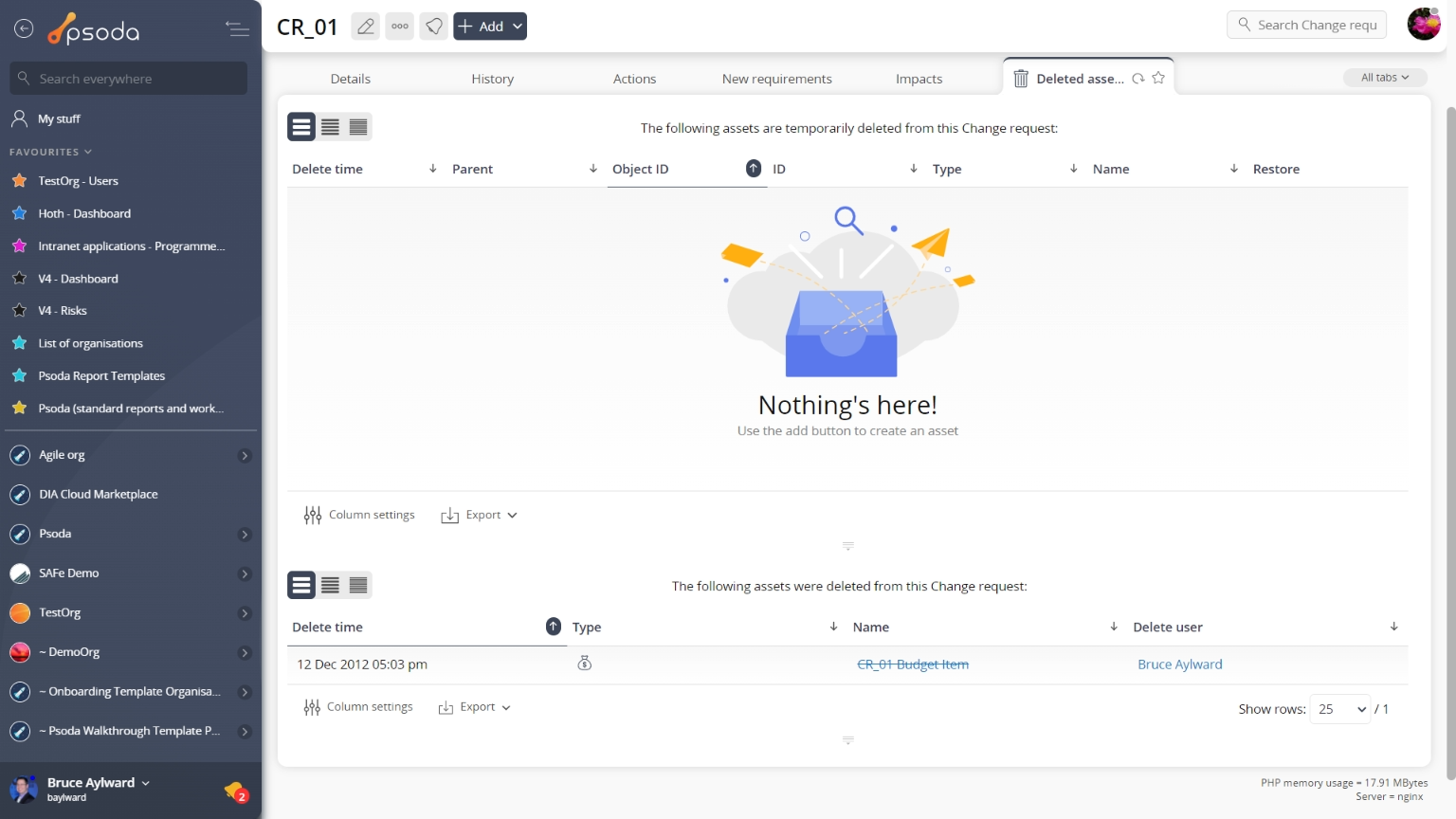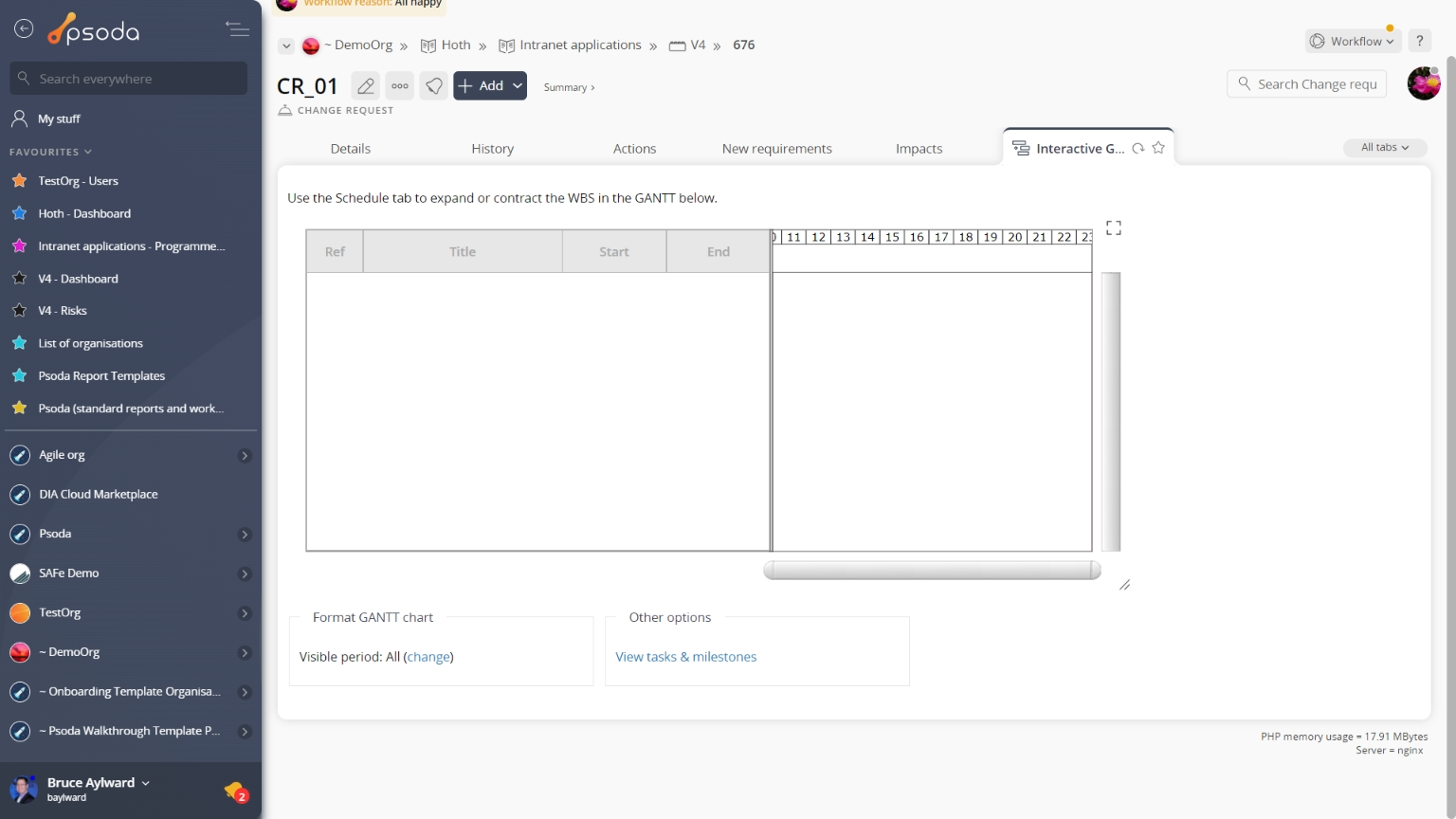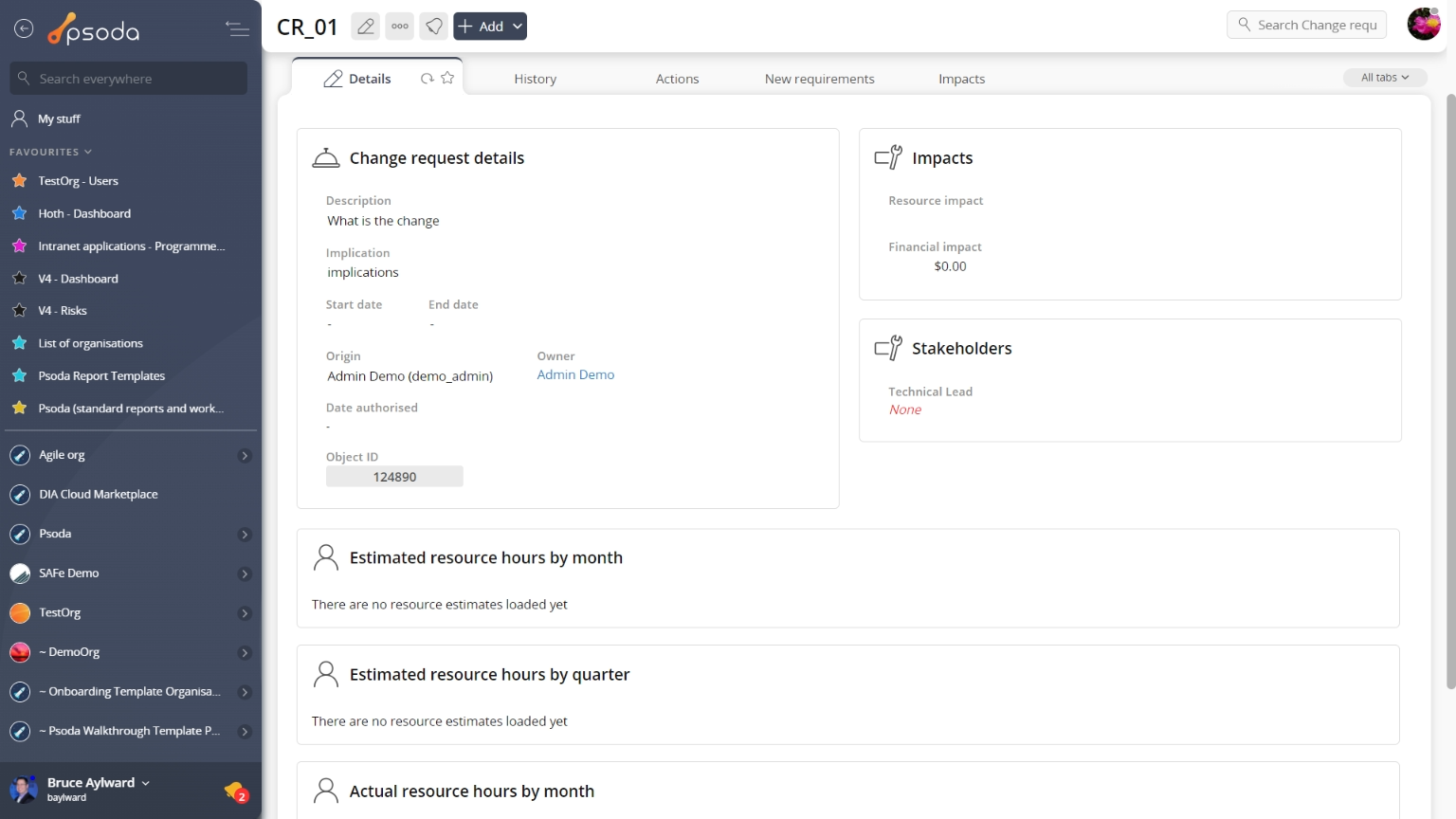
Figure 1 – Change request view page
The top header area allows you to- The
Add requirement button allows you to add a new requirement to the project and link it as a dependent of this change request. This would be equivalent to creating a new requirement on the project and then manually adding this change request as a source of that requirement.
- The
Edit impacts button allows you to select which requirements of the project are directly impacted by this change request. You only need to select the highest level requirements. All the dependent requirements and test cases will be listed in the Impact Report.
 Actions
Actions
This tab shows an asset listing of all of the actions registered for this change request, as shown in Figure 2. By default, this table will present you with a number of details about the actions such as it’s reference, description, priority and due date to name a few. If you click on the reference link of the listed action, you will navigate to that action’s view page.
From the Actions column of this actions table, you can act on individual actions by 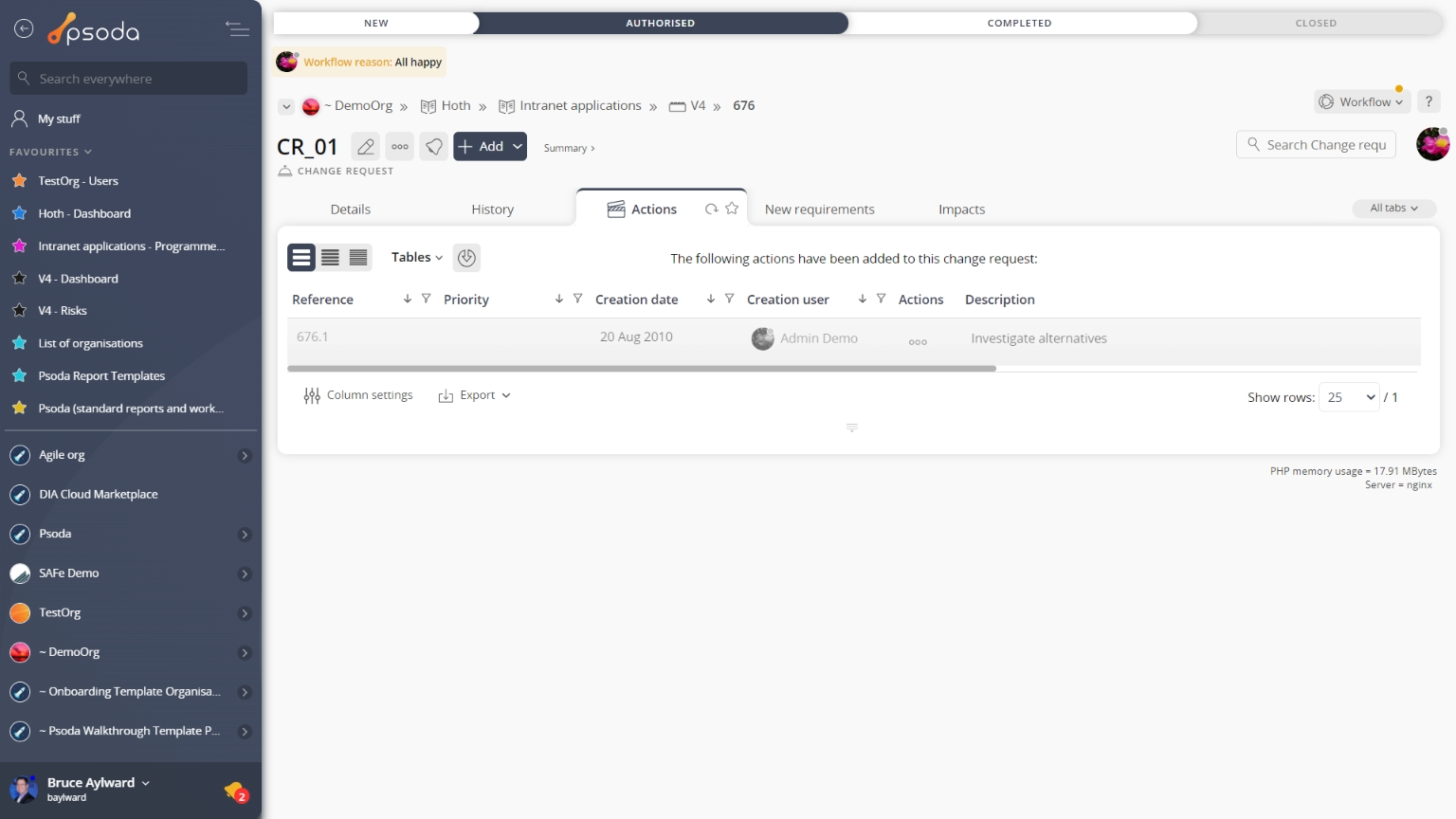
Figure 2 – Change request actions tab
Note that you can customise your table view by clicking the Assumptions
Assumptions
This tab shows an asset listing of all of the assumptions that have been added to this change request, as shown in Figure 3. By default, this table will present you with a number of details about the assumptions such as it’s reference, title, description, the user who created this assumption and it’s current state. If you click on the reference link of the listed assumption, you will navigate to that assumption’s view page.
From the Actions column of this assumptions table, you can act on individual assumption by 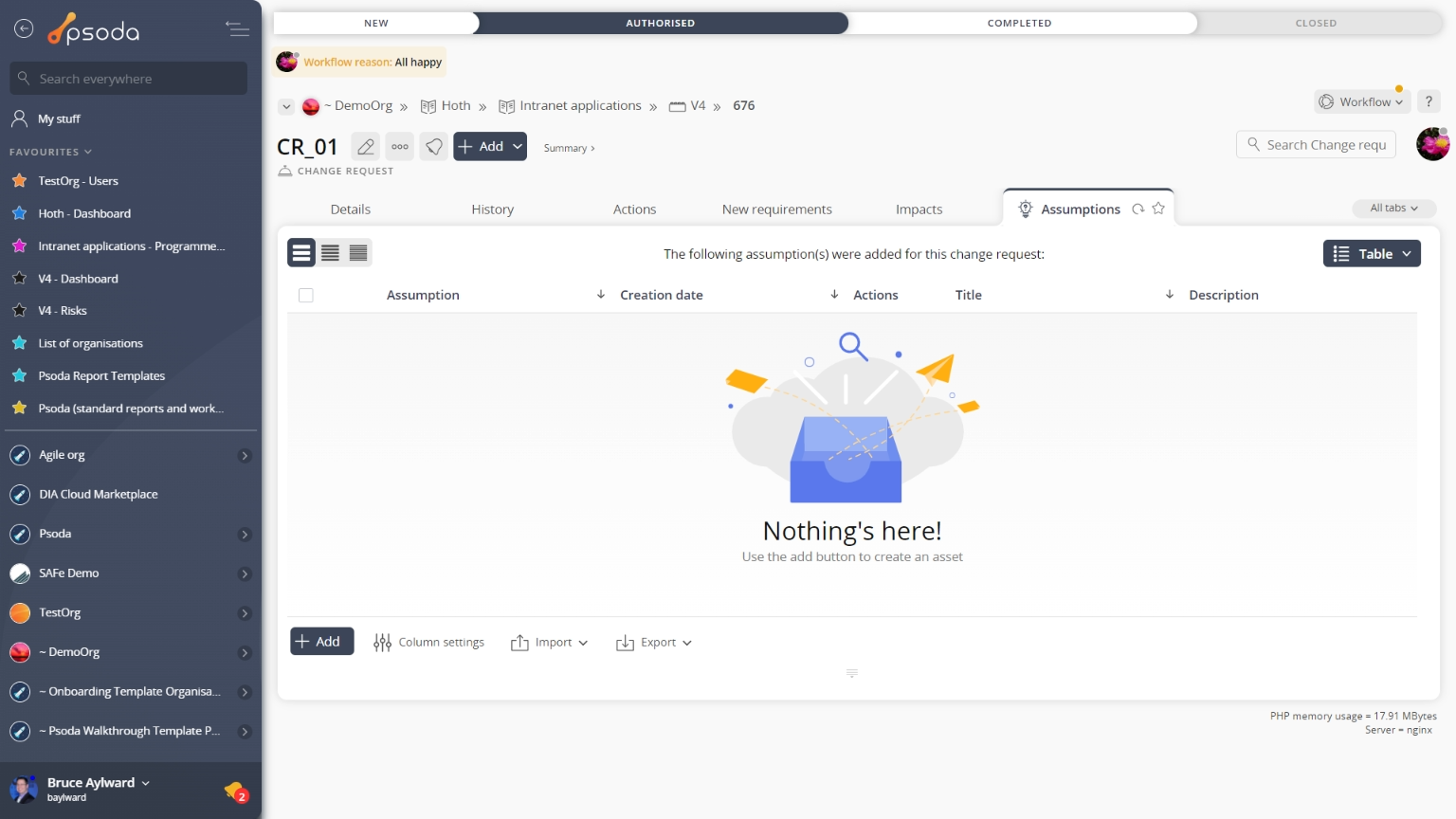
Figure 3 – Change request assumptions tab
Note that you can customise your table view by clicking the Attachments
Attachments
This tab shows an asset listing of all of the attachments that have been added to this change request, as shown in Figure 4. By default, this table will present you with a number of details about the attachments such as the file’s name, attachment type, view the version and access a download link.
From the Actions column of this attachments table, you can act on individual attachments by 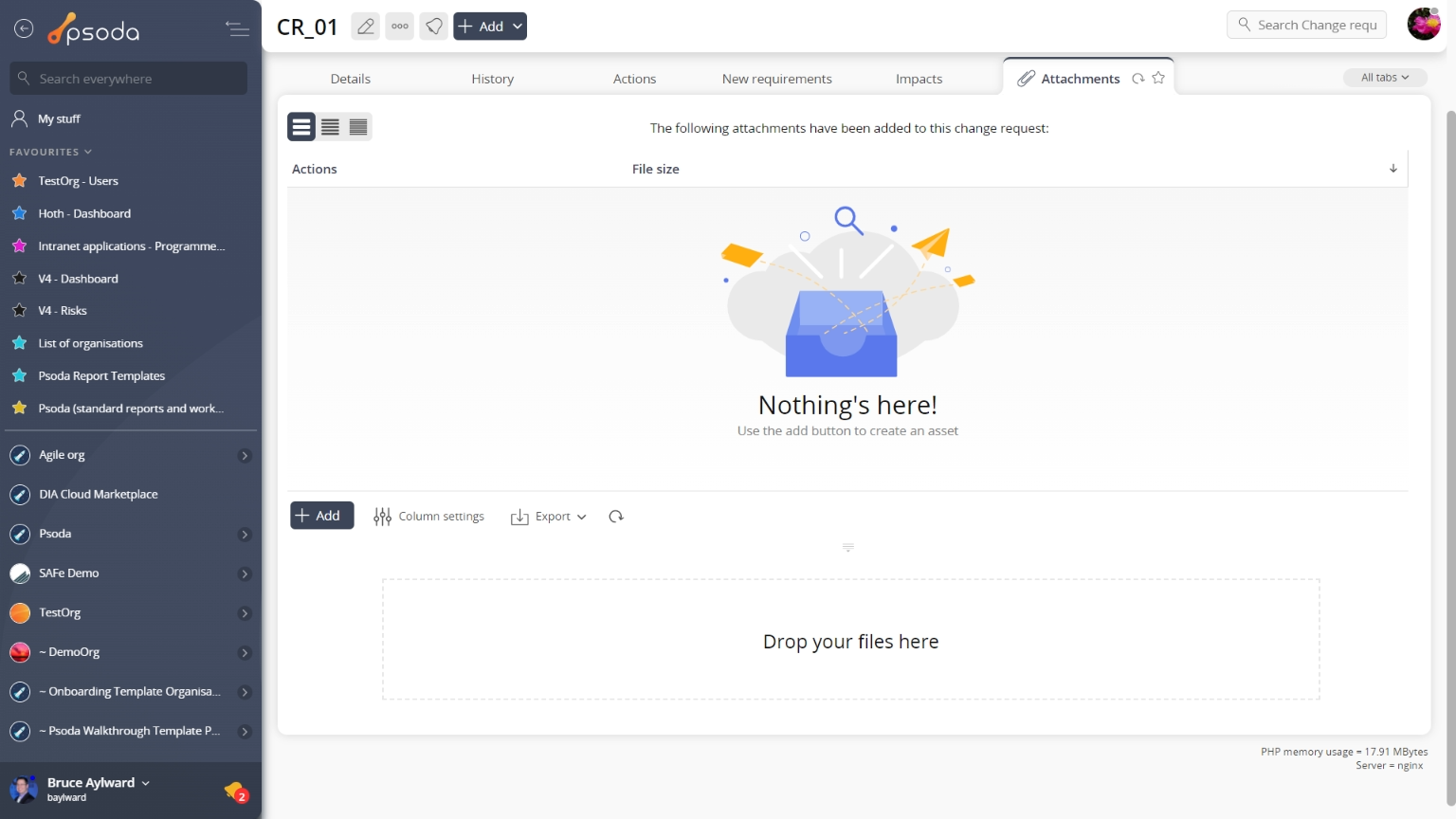
Figure 4 – Change request attachments tab
Note that you can customise your table view by clicking the Benefits
Benefits
This tab shows an asset listing of all of the benefits defined for this change request, as shown in Figure 5. By default, this table provides measurement information about the benefits listed, it’s title and a progress indicator. From here you may also view the workflow 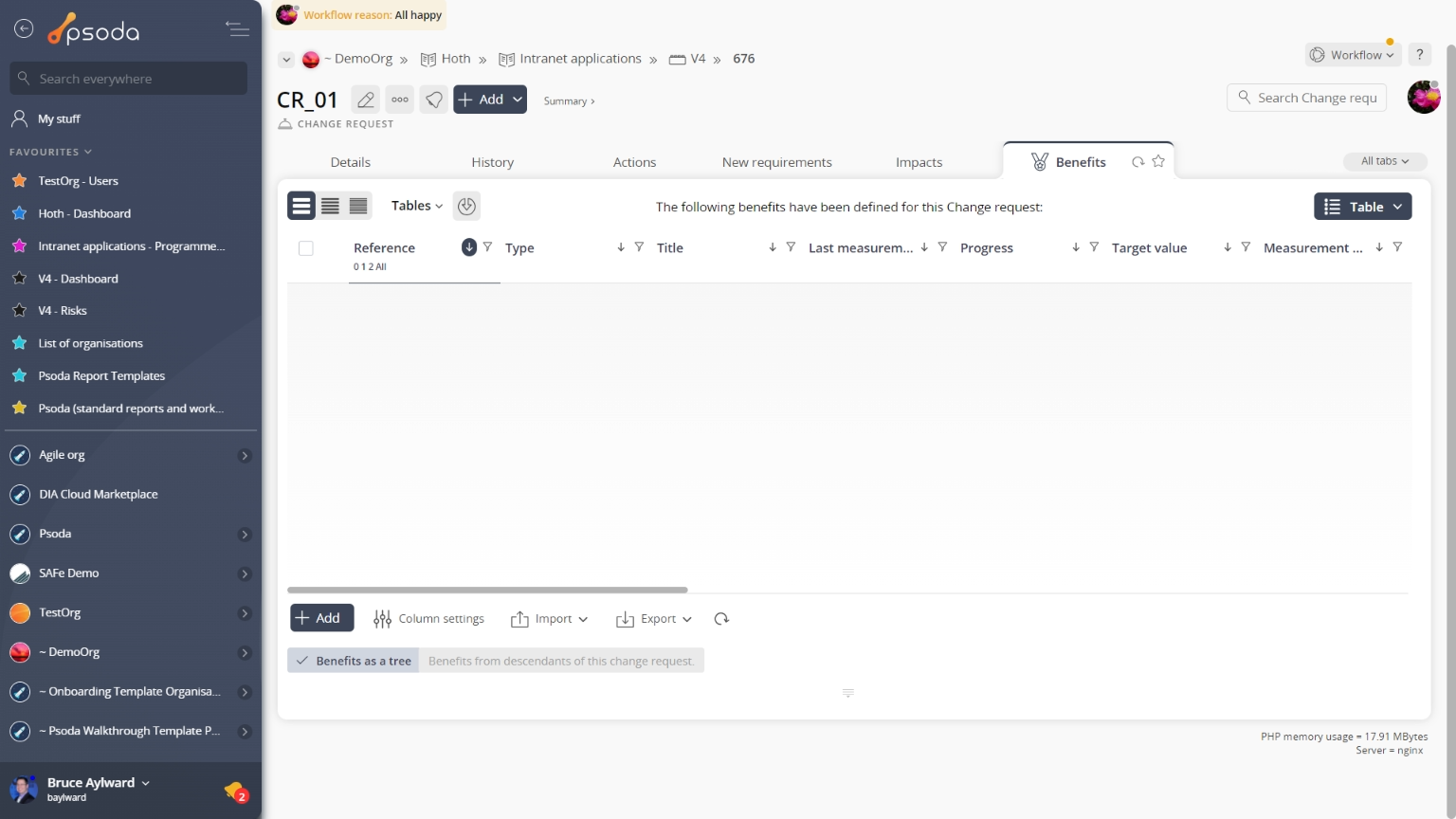
Figure 5 – Change request benefits tab
Note that at the bottom of the table you can add more benefits, or customise your table view by clicking the
edit button to show or hide certain benefit information, or export this benefit list to
Excel or
CSV files.
 Benefit Map
Benefit Map
Instead of a table view, this tab provides a graphical view of your benefits. The benefits map is generated from the information you put in the benefits table. Figure 6 below shows an example benefits map:
 Figure 6 – Change request benefit map
Figure 6 – Change request benefit map
 Budgets
Budgets
This tab shows an asset listing of all of the budget groups or budget items that have been added to this change request, as shown in Figure 7. By default, this table shows the baseline and actual cost details for this budget or group, together with all of the budget items and groups it contains.
From the Actions column of this budgets table, you can act on individual budget groups by 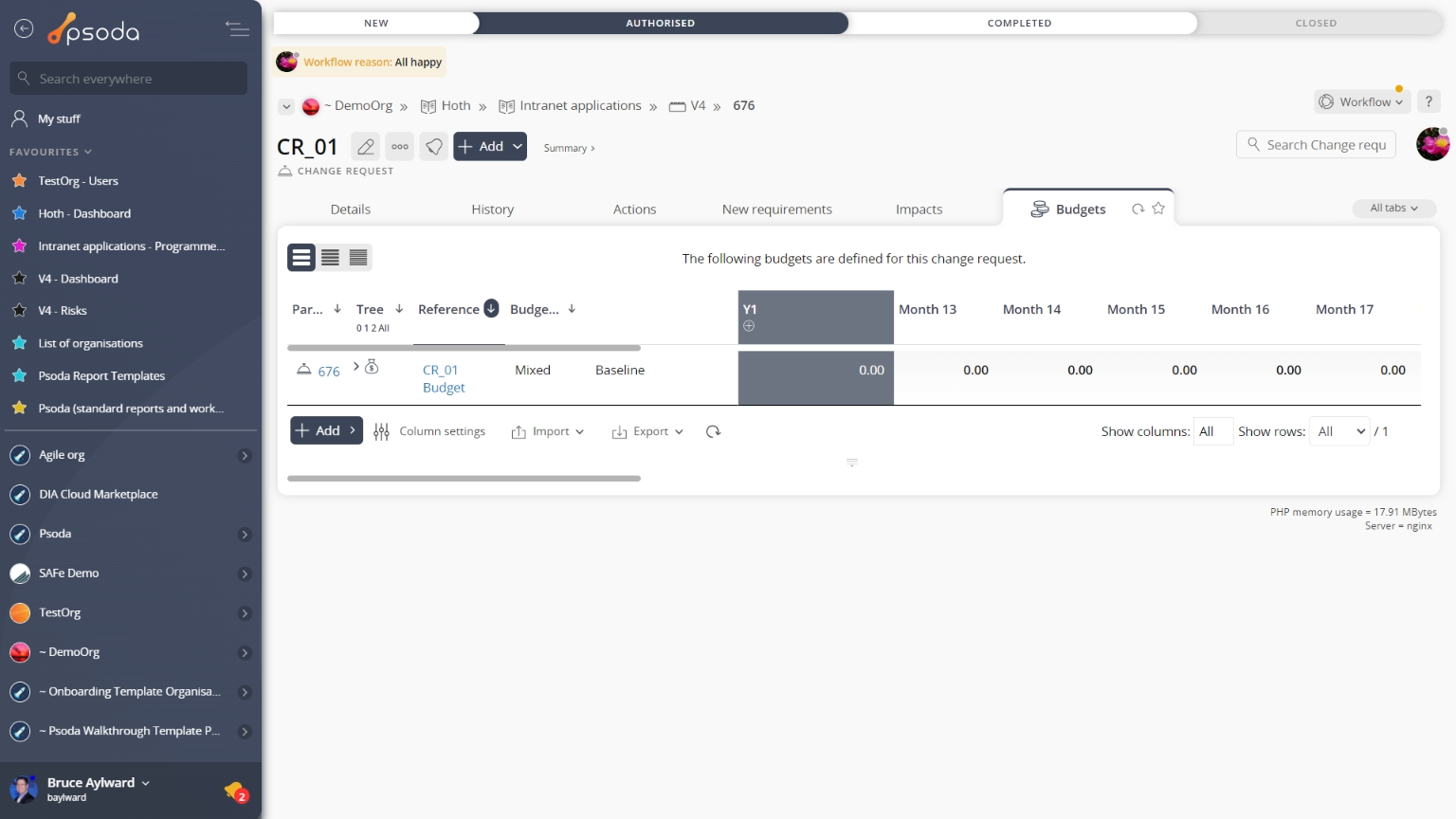
Figure 7 – Change request budgets tab
Note that you can customise your table view by clicking the edit button at the bottom of the budget table or navigate to this same spot to
add more budgets to this change request, or
import a number of budgets from a CSV file. Here, you can also export this budget list to
Excel or
CSV files.
 Comments
Comments
This tab shows an asset listing of all of the comments that 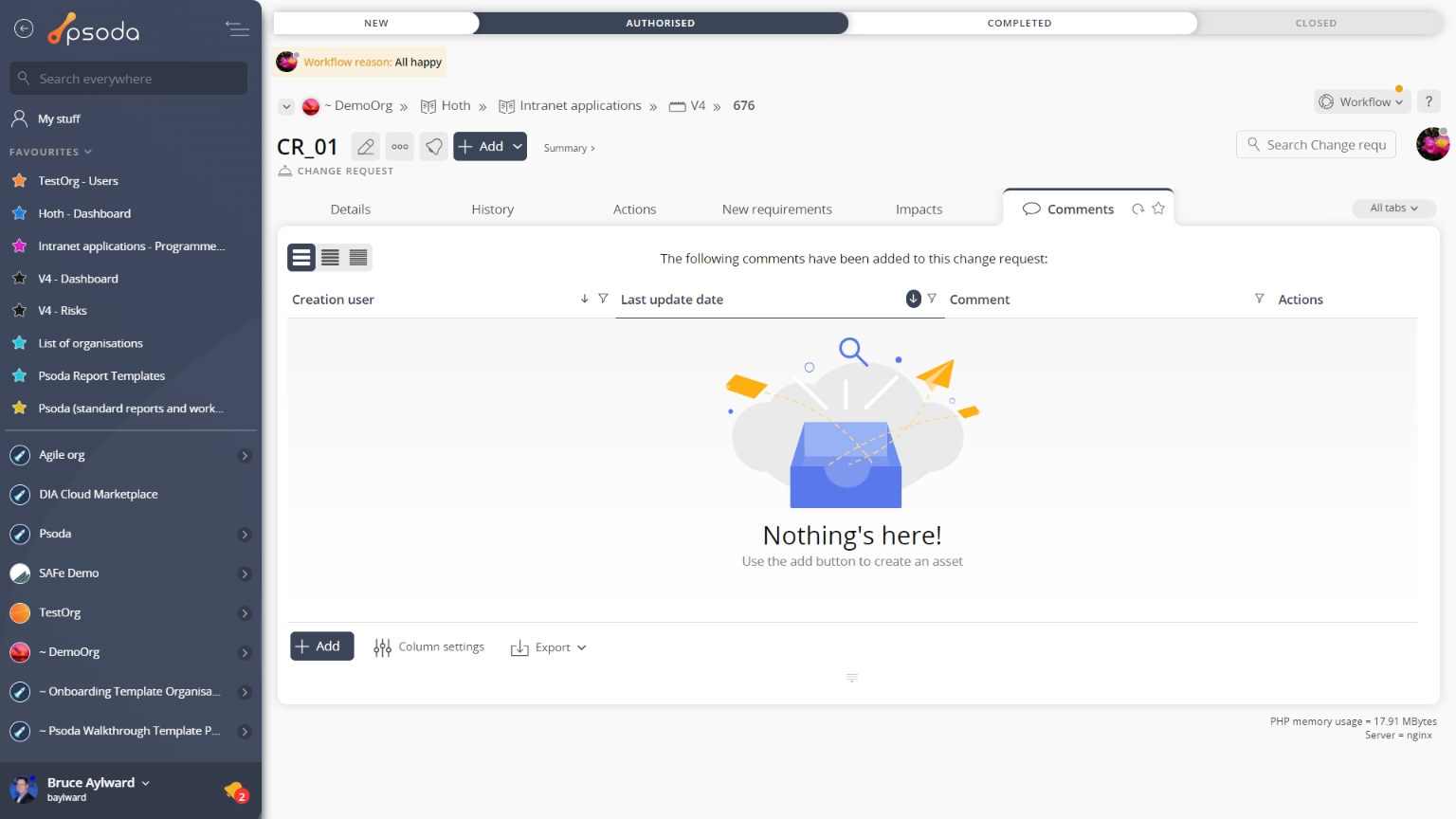
Figure 8 – Change request comments tab
Note that you can customise your table view by clicking the Deleted assets
Deleted assets
This tab shows an asset listing of all of the assets that Figure 9 – Change request deleted assets tab
Note that you can customise your table view by clicking the edit button at the bottom of the tables. Here, you can also export the list to
Excel or
CSV files.
 Details
Details

Figure 10 – Change request details tab
This tab shows some additional details on the change request, for example the description, implication, necessary dates, origin and owner, as shown in Figure 10. Exceptions
Exceptions
This tab shows an asset listing of all of the exceptions that have been added to this change request, as shown in Figure 11. By default, this table shows the exception’s title, description and consequences, as well as any recommendations and who created the exception. If you click on the link in the reference column, you will navigate into the selected exception’s view page.
From the Actions column of this exceptions table, you can act on individual exceptions by 
Figure 11 – Change request exceptions tab
Note that you can customise your table view by clicking the edit button at the bottom of the exceptions table or navigate to this same spot to
add more exceptions to this change request. Here, you can also export this list to
Excel or
CSV files.
 GANTT
GANTT
This tab shows the GANTT chart shown in Figure 12, generated by the information in your Schedule tab of the change request. By default, this table shows the name of the task group, task or milestone and it’s start and end dates.
On the right-most side of the chart we have a breakdown of tasks in a visual format than will span across a monthly, weekly or daily scale (this is setting dependant). The users who are allocated to each asset will have their names written next to this asset’s timeline.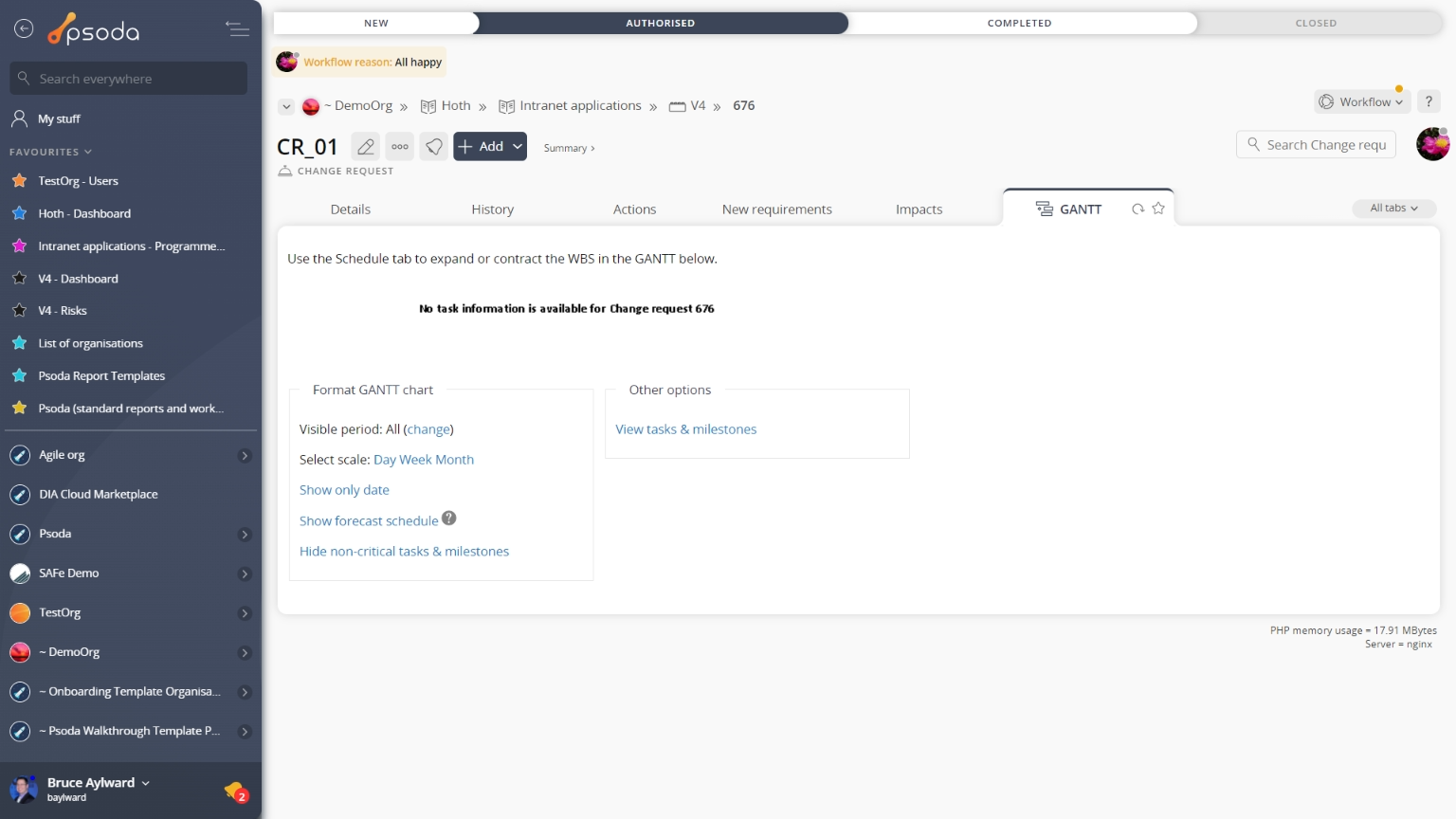
Figure 12 – GANTT chart
At the very bottom of this tabbed view you are presented with a number of table information formatting options which will adjust the GANTT’s visible period, or scale, or whether it displays more than just task dates.In addition, the view tasks & milestones link will navigate to the Schedule tab so that you can expand or contract the work breakdown structure viewed in the GANTT.
 History
History
This tab shows shows some basic history of the change request, as shown in Figure 13. By default, this tab will present you with a number of details about the change request’s history such as the creation date, creation user, last update date and last update user. If the change request has been changed then this section will also show a table of all the changes that has been made, including the date of each change, the field changed, the value before the change and the user who made the change.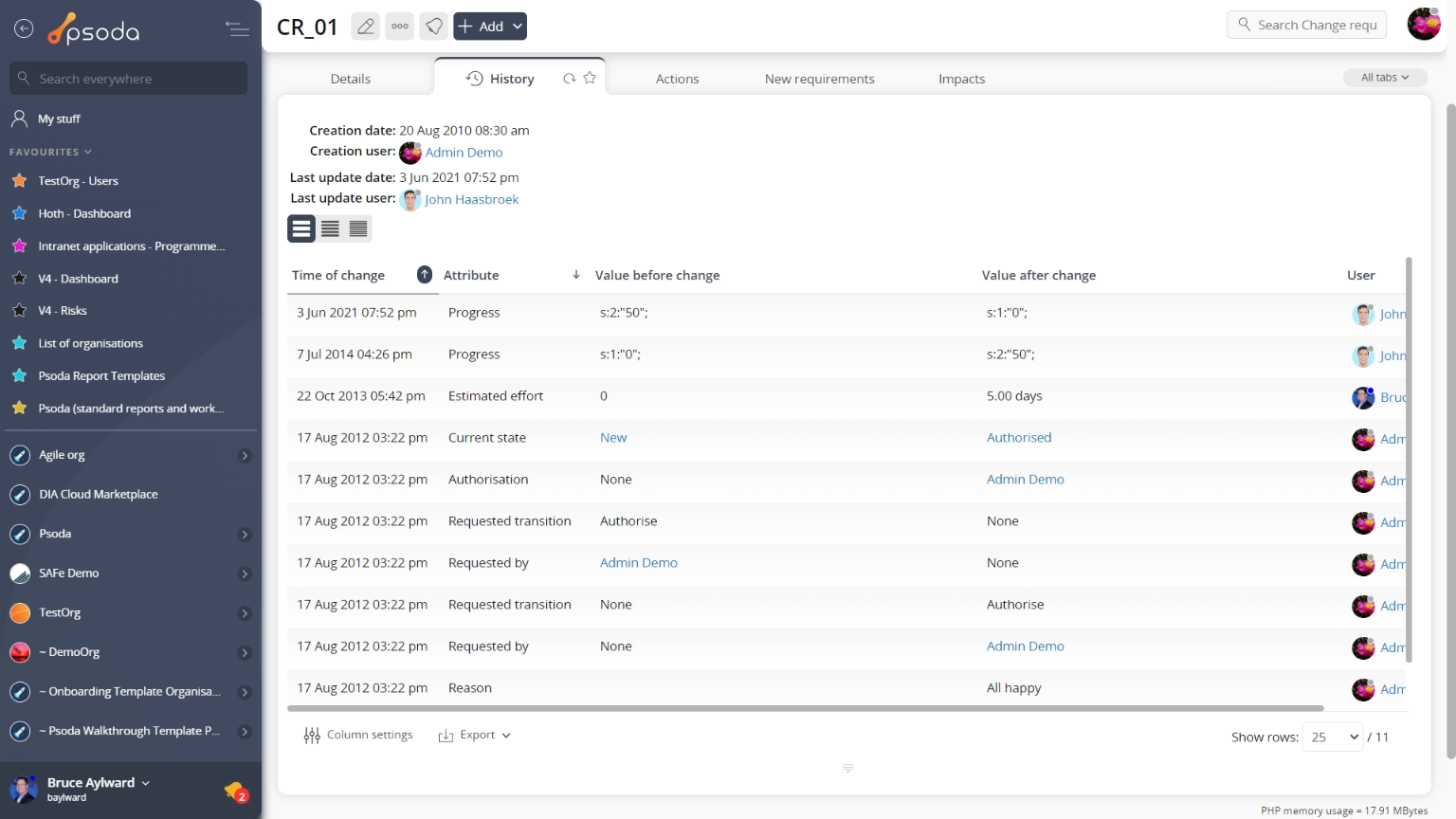
Figure 13 – Change request history tab
Note that you can customise your change table view by clicking the edit button at the bottom of the change table. Here, you can also export this list of changes to
Excel or
CSV files.
 Impacts
Impacts
This tab shows an asset listing of all of the existing requirements on the project that have been impacted as a direct result of this change request, as shown in Figure 14. If you click on the link in the reference column, you will navigate into the selected impacted asset’s view page.
From the Actions column of this impacts table, you can act on individual exceptions by 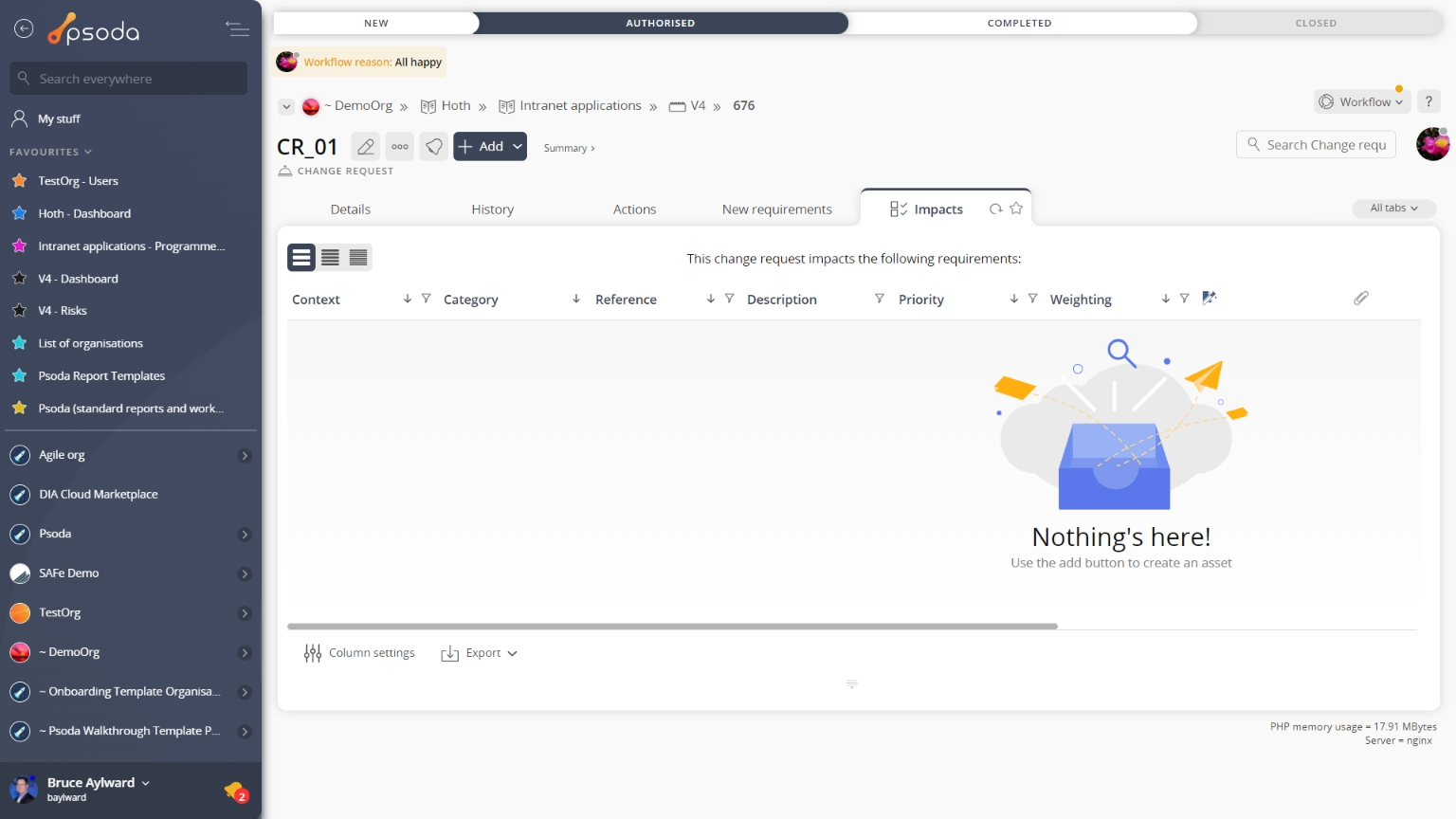
Figure 14 – Change request impacts tab
Note that you can customise your table view by clicking the Interactive GANTT
Interactive GANTT
This tab shows the interactive GANTT chart shown in Figure 15, generated by the information in your Schedule tab of the change request. By default, this table shows the name of the task group, task or milestone and it’s start and end dates.
On the right-most side of the chart we have a breakdown of tasks in a visual format than will span across a monthly, weekly or daily scale (this is setting dependant). The users who are allocated to each asset will have their names written next to this asset’s timeline.Figure 15 – Change request interactive GANTT tab
At the very bottom of this tabbed view you are presented with a number of table information formatting options which will adjust the GANTT’s visible period, or scale, or whether it displays more than just task dates.In addition, the view tasks & milestones link will navigate to the Schedule tab so that you can expand or contract the work breakdown structure viewed in the GANTT.
 New requirements
New requirements
This tab shows an asset listing of all of the new requirements on the project as a direct result of this change request, as shown in Figure 16. If you click on the link in the reference column, you will navigate into the selected requirement’s view page. By default this requirements table will list some details for the requirements such as the reference, category, description, priority, weighting and current state.
From the Actions column of this requirements table, you can act on individual requirements by  Reports
Reports
This tabbed view shows a listing of the reports as seen in Figure 17, listing any reports available for this change request.
Figure 32 shows a portion of this alphabetical listing, and your specific list may vary slightly depending on if your System Administrator has created any new report templates that have been customised to be available to your change requests only.
Figure 17 – Report table
This listing is unable to be customised, but provides the name of the report and a more detailed description of what information this report is built for and how the report is grouped.
The Impact report is particularly useful as it lists out all of the impacted requirements and their dependents. It also shows the list of impacted test cases that may need to be re-tested when this change request is implemented. The other report that may be of interest is the Action progress report. This report shows a summary of all of the actions on this change request.Once you click on a report’s name, the run report form will popup. These popup forms vary depending on the report being run.
 Risks
Risks
This tabbed view shows the risks table as seen in Figure 18, listing any risks that have been logged for this change request. By default, you will be shown the risk’s context, reference, title, description, proximity, any workflow transitions that may be available and other details also captured in the screenshot below.
The Actions column of this table provides accessible functions to act on a chosen role. These functions include Figure 18 – Risk table
Note that at the bottom of this table you can Schedule
Schedule
This tab shows an asset listing of all of the new 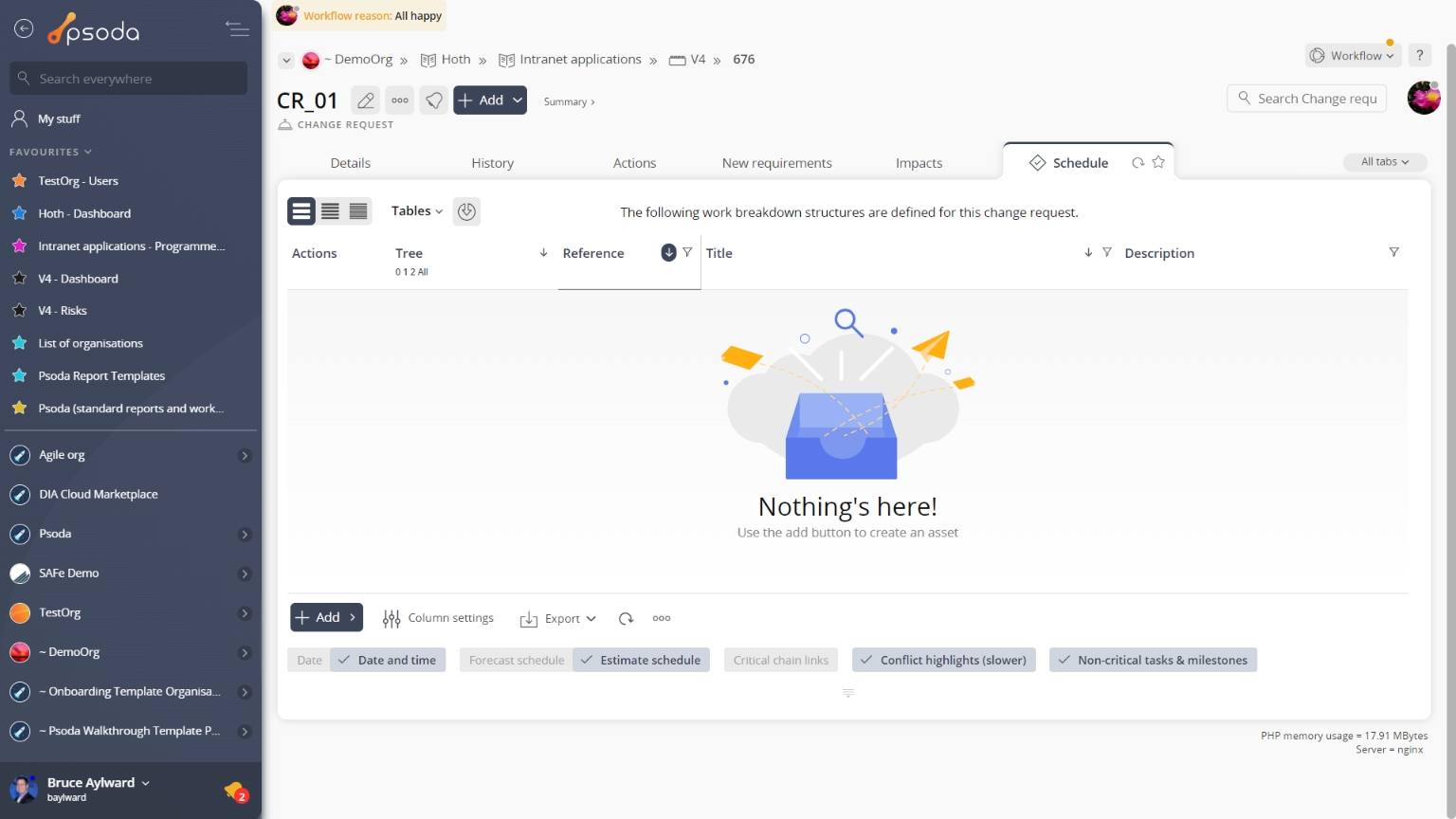
Figure 19 – Change request tasks and milestones tab
Note that you can customise your table view by clicking the